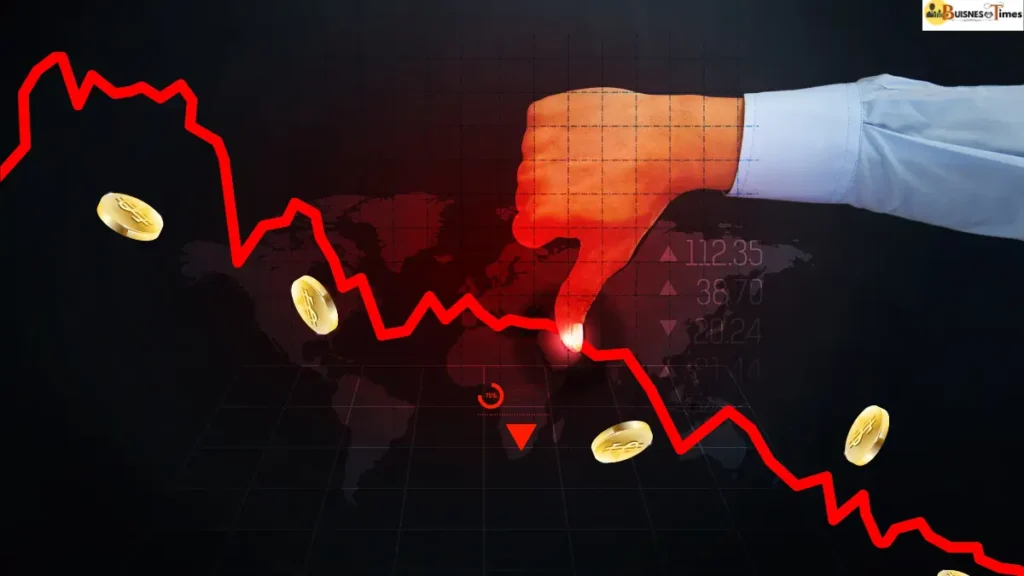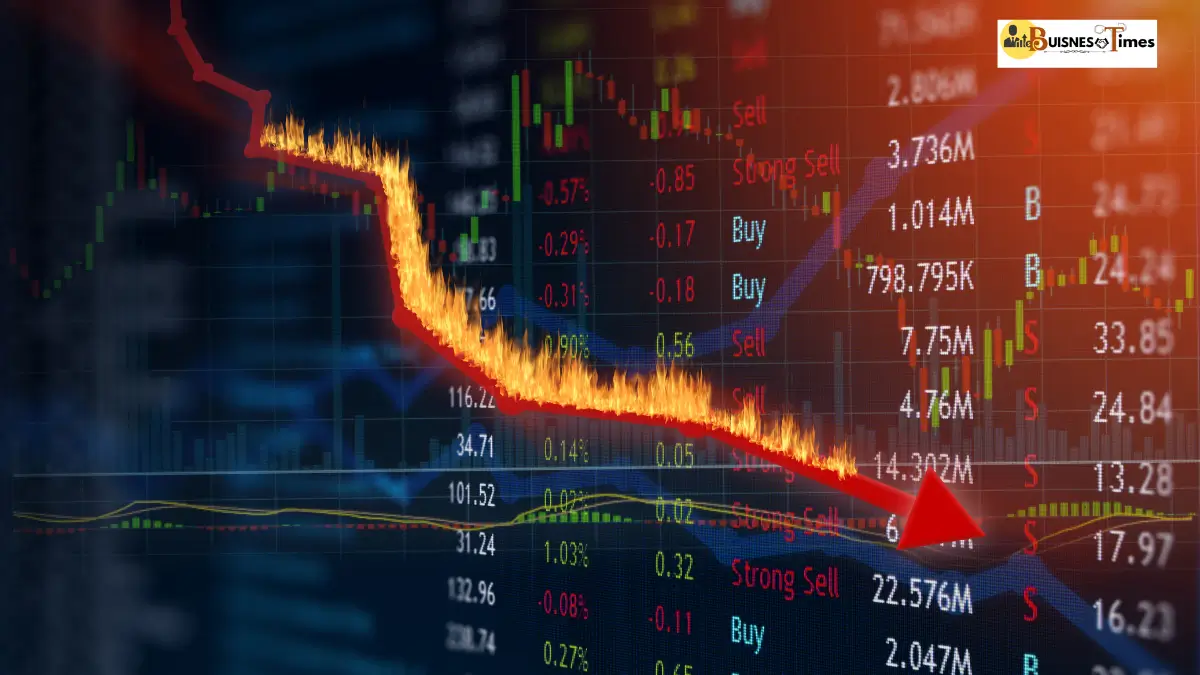The Indian Sensex market witnessed a sharp decline on Thursday, August 28, 2025, as heavy selling pressure dragged both benchmark indices into the red. Investor sentiment weakened after the United States imposed 50% tariffs on a wide range of Indian goods, raising concerns over export growth, employment generation, and overall economic momentum.
At the opening bell, markets were already under pressure, and by 9:30 AM, the BSE Sensex slipped 677.75 points (0.84%) to 80,108.79, while the NSE Nifty50 fell 199.20 points (0.81%) to 24,512.85. Broader indices also mirrored the fall, with Nifty Midcap 100 tumbling 0.94% and Nifty Smallcap 100 declining 1.04%, reflecting widespread selling.

Tariffs Spark Investor Concerns
The new 50% US tariff on Indian imports, which came into effect on Wednesday, is expected to hit labor-intensive industries such as apparel, leather, footwear, gems and jewellery, shrimp exports, and diamond processing. These sectors collectively employ millions of workers, particularly in export hubs like Surat, Tiruppur, and Visakhapatnam.
Market analysts believe the tariff move could dampen India’s export competitiveness, leading to job losses in key industries. “This tariff hike has created uncertainty in the market. Export-oriented companies, especially in the textile and gem segments, are likely to face near-term challenges,” said a Mumbai-based equity strategist.
Sectoral Indices in Deep Red
Almost all major sectoral indices traded in the red. Nifty IT was the worst performer, sliding 1.25%, as fears of reduced outsourcing demand weighed on technology majors. Nifty Realty slipped 1.21%, while Nifty Pharma fell 0.91%, indicating that selling pressure was broad-based.
Experts pointed out that IT companies were already facing margin concerns due to rising costs and global macro uncertainties, and the fresh tariff environment has added another layer of risk.
FIIs vs DIIs: Contrasting Moves
According to exchange data, Foreign Institutional Investors (FIIs) offloaded shares worth ₹6,516.49 crore on Tuesday, reflecting their cautious stance on Indian equities. However, Domestic Institutional Investors (DIIs) provided some cushion, buying equities worth ₹7,060.37 crore on a net basis.
This tug-of-war between FIIs and DIIs has been a recurring theme in 2025, with global investors reacting swiftly to geopolitical and economic developments, while domestic institutions continue to support markets during sharp declines.
Global Market Cues
Interestingly, Indian equities underperformed compared to other Asian markets. On Thursday, Japan’s Nikkei rose 0.57%, South Korea’s KOSPI gained 0.45%, and Shanghai Composite inched up 0.07%. However, Hong Kong’s Hang Seng fell 0.66%, bucking the regional trend.
On Wall Street, sentiment remained upbeat on Wednesday. The S&P 500 gained 0.24%, the Nasdaq rose 0.21%, and the Dow Jones added 0.32%, as investors awaited Nvidia’s quarterly results to gauge the sustainability of the AI-driven stock rally.
This global divergence suggests that while Asian peers benefitted from positive US cues, Indian equities were weighed down by domestic concerns, particularly the impact of the tariff hike.
Market Breadth and Volatility
The market breadth was decisively weak in early trade. On the NSE, 2,595 stocks were active — 1,985 declined, 519 advanced, and 91 remained unchanged.
Meanwhile, India VIX — the volatility index — spiked 6% to 12.92, highlighting rising investor nervousness. Typically, a surge in VIX indicates expectations of increased market swings in the near term.
Adding to the bearish undertone, 48 stocks hit their 52-week lows, while only 11 stocks touched their yearly highs. Moreover, 35 stocks hit lower circuits compared to 31 stocks that managed to hit upper circuits.

Nifty50 Gainers and Losers
The Nifty50 index saw only nine gainers against 41 losers, reflecting strong bearish dominance.
Top Losers:
- Shriram Finance: -2.72%
- HCL Technologies: -2.06%
- HDFC Bank: -1.66%
- Jio Financial Services: -1.60%
- Sun Pharma: -1.37%
Top Gainers:
- Hero MotoCorp: +1.55%
- Eternal: +0.80%
- Asian Paints: +0.75%
- Eicher Motors: +0.49%
- Maruti Suzuki: +0.30%
- Titan: +0.22%
- L&T: +0.04%
Two-wheeler manufacturer Hero MotoCorp stood out as the top performer on the index, supported by robust domestic demand and festive season expectations.
Expert Views and Outlook
Market experts caution that volatility may continue in the near term as investors assess the impact of the new tariff regime. Export-heavy stocks, particularly in textiles, IT, and gems, may remain under pressure until there is clarity on trade negotiations.
At the same time, analysts believe that sectors tied to domestic consumption, such as automobiles, FMCG, and paint companies, may act as safe havens amid global trade turbulence.
“Investors should adopt a selective approach. While the overall sentiment is weak, India’s domestic growth story remains intact, and long-term opportunities continue to exist,” said a senior fund manager at a leading mutual fund house.
Key Takeaways
- Sensex fell 678 points to 80,108; Nifty dropped 199 points to 24,512.
- US tariffs of 50% on Indian goods spooked investor sentiment.
- IT, Realty, and Pharma were the biggest sectoral losers.
- FIIs sold ₹6,516 crore worth of equities, while DIIs bought ₹7,060 crore.
- India VIX surged 6%, signaling higher volatility ahead.
- Hero MotoCorp led the gainers, while Shriram Finance topped the losers’ list.
The next few trading sessions will be crucial as markets balance global cues with domestic economic challenges. For now, cautious optimism with a defensive investment approach seems to be the preferred strategy among experts.
Disclaimer: This article is for informational purposes only and should not be considered as financial advice. Investors are advised to consult with their financial advisors before making any investment decisions.

